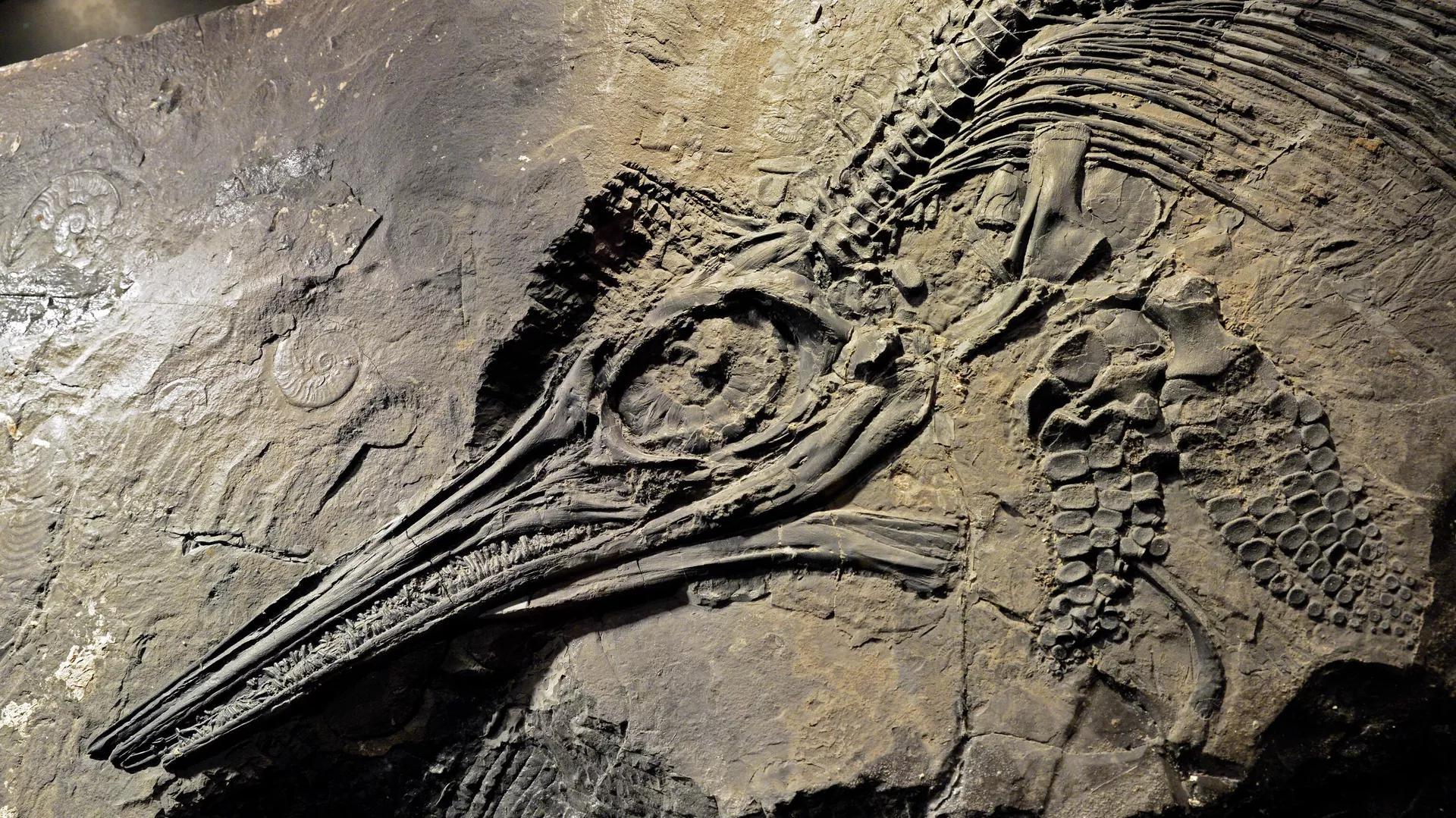Africa-Press – Mauritius. The researchers said that the previous record holder for largest tooth was an ichthyosaur that was about 50 feet (15 meters) long, allegedly making the owner of this newly identified tooth one of the largest animals ever to dwell on land or sea.
Researchers have discovered the fractured tooth of one of the world’s largest prehistoric carnivores, a new paper published in the Journal of Vertebrate Paleontology, revealed.
According to the study, the teeth belonged to an enigmatic and uncommon species of enormous ichthyosaur, a flesh-eating marine reptile that roamed the world’s waters some 205 million years ago. The fossil fang’s root is twice as broad as any other ichthyosaur tooth known, despite the tooth’s crown being partially missing.
The research team admitted that it is virtually impossible to establish whether the ancient marine reptile was a true leviathan or simply one of many similar-sized sea monsters that roamed the Triassic seas because of the tooth not being complete.
The researchers studied a single huge fossil ichthyosaur tooth from the Swiss Alps’ Kossen Formation — a 2,800-meter rock formation that once stood at the bottom of a Triassic sea.
The researchers examined the fossil tooth, as well as some massive ichthyosaur ribs and vertebrae discovered in the same Alpine formation between 1976 and 1990.
To assess the size and species of the new specimens, the scientists compared the bone samples to previous huge ichthyosaur fossils with more complete skeletons.
The fossil tooth is twice as broad as any known Himalayasaurus species tooth, measuring around 60 mm wide at the root and 100 mm tall from the root to the fractured end of the crown, according to the researchers.
The tooth’s distinctive pattern of dentin — the hard tissue that makes up the majority of reptile and mammal teeth indicates that it belonged to an ichthyosaur, but the fossil’s enormous size defies identification.
If the creature’s body was substantially larger than Himalayasaurus, as the tooth suggests, researchers may have uncovered the world’s largest ichthyosaur.
The Kossen Formation’s ribs and vertebrae are among the largest ichthyosaur fossils ever unearthed in Europe, according to the researchers. The tooth, ribs, and vertebrae appear to be from three separate ichthyosaurs, all of which were massive.
Still, the team claimed that measurements of the bones may be slightly skewed, since several of the fossils appear to have been flattened by tectonic plate movement that lifted the Alps out of the sea over hundreds of millions of years.
The Shastasaurus sikanniensis, a whale-like monster that measured up to 21 m long and possibly longer, is the largest known ichthyosaur yet. It is noteworthy, given that modern blue whales are typically 24 to 30 meters long, while the predator king Tyrannosaurus rex was an average of 12 meters long.
According to the researchers, many huge ichthyosaurs, notably the Shastasaurus, appear to have evolved top predator status without ever developing teeth. Only one species of huge ichthyosaur is known to have had a mouthful of teeth: the 15-meter-long Himalayasaurus unearthed in Tibet.
Ichthyosaurs, or “fish lizards,” appeared in the middle Triassic period approximately 252 million to 201 million years ago, not long after the end-Permian catastrophe wiped off roughly 95% of life in the oceans.
Within 5 million years of their first appearance, ichthyosaurs had grown to vast proportions and dominated all of the world’s oceans, until they totally went extinct about 93 million years ago.
For More News And Analysis About Mauritius Follow Africa-Press







